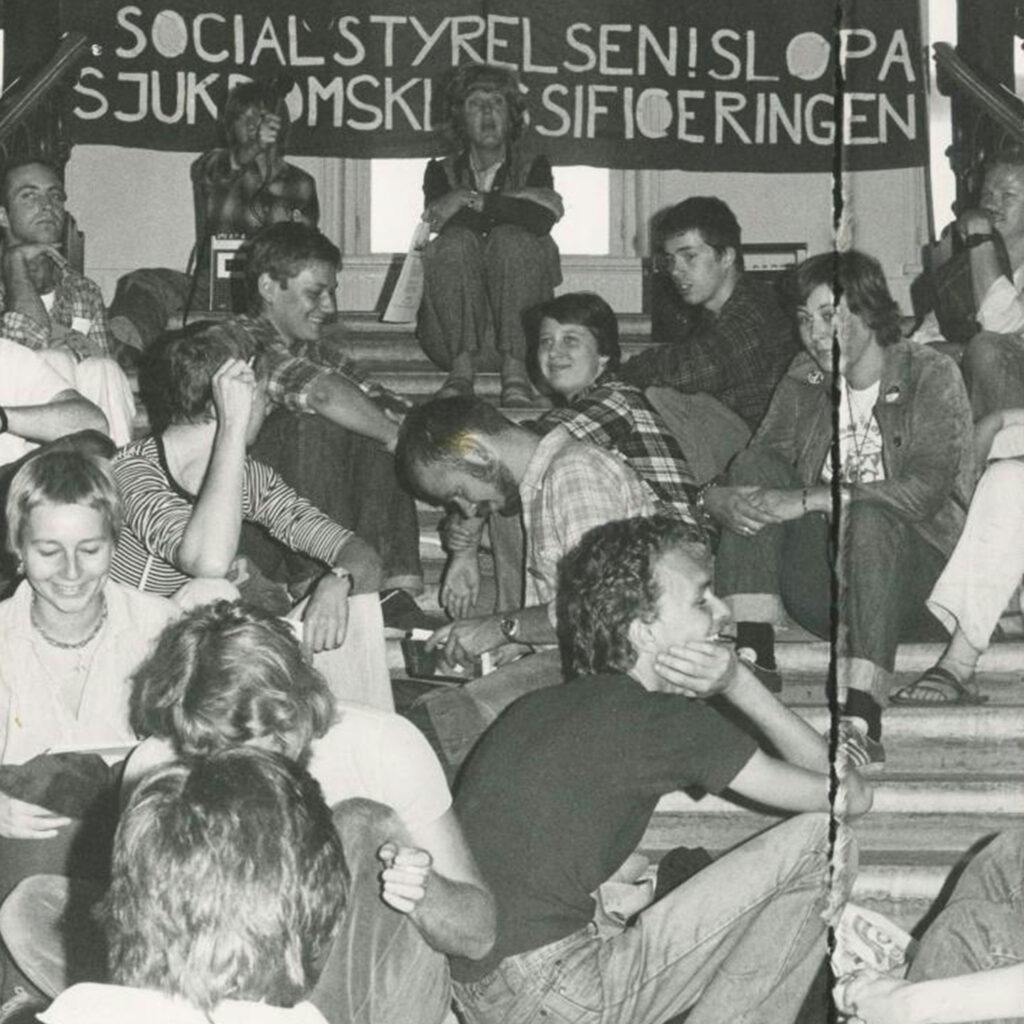The right to love!
Today, we view universal suffrage and the right to love someone of the same sex as given. And the idea that your teacher would punish you by slapping your hands with a ruler seems outrageous. But this has not always been the case.
Take homosexuality. Up until 1944, being in love with someone of the same sex was a crime in Sweden. After that, homosexuality was legalised but was still considered a medical condition to be cured. Gay people were locked up in mental institutions and “treated” with drugs and electric shocks. The only sexuality accepted by institutions such as the social, healthcare, and psychiatric services was heterosexuality.
In the 1960s and 1970s, the organised struggle for gay rights gained traction. During the Stonewall uprising in New York in 1969, large crows protested the police’s repeated raids against gay clubs. This uprising was the starting point for the annual Pride parades that still take place in cities around the world. The aim of these protests was to challenge the heterosexual norm in society.
During this time, there was also a boom in gay literature, which led to a better public understanding of the oppression of people diverging from the norm. Along with organised “liberation weeks”, the dominant story of homosexuality as a medical condition began to change.
In Sweden, the first liberation week took place in 1977, where activists from the organisations RFSL, Röda Bögar and Lesbisk Front joined forces to fight for gay rights. Hard work created new opportunities for action. In 1979, activists from RFSL occupied the entrance to the headquarters of the National Board of Health and Welfare in Stockholm. At the same time, many gay activists applied for sick leave at the agency. Their reason? Homosexuality.
This was one of the first and most impactful acts of gay civil disobedience in Sweden. The sick leaves highlighted the absurdity of viewing homosexuality as a medical condition. The occupants secured a meeting with the head of the National Board of Health and Welfare, demanding that the classification be removed immediately, and thanks to them, it was removed later the same year.
The legal rights of gay people look different around the world, and societies don’t all change at the same time. It was not until 1990 that the WHO removed its classification of homosexuality as a medical condition. In China, it was removed in 2001. In several countries, homosexuality is punished by execution or lifetime prison sentences.
However, it wouldn’t be the last time that the entrance to the National Board of Health and Welfare was occupied. In 2012, activists repeated the action demanding that the classification of transsexuality as a medical condition should be removed. It took five years, but in the end this classification was also removed.
Progress is not a straight line, but a constant struggle.
